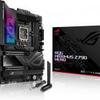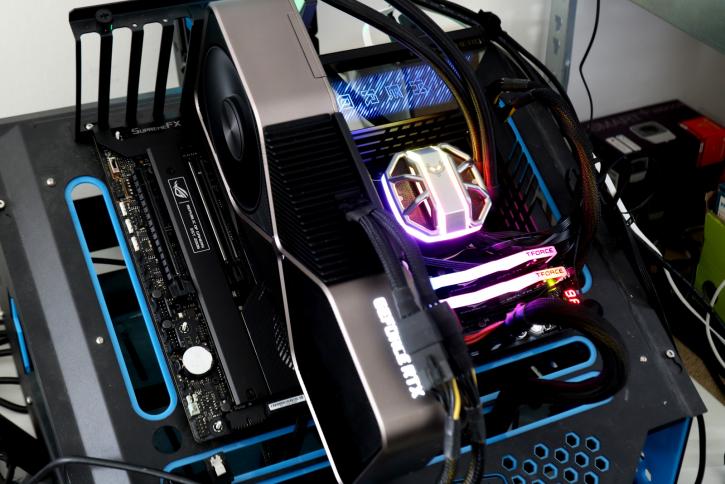Words & Conclusion
Final Words
The HERO is a bit of a feast for the eyes, oozes quality and performance, and then we used 7200 MHz DDR5 here also. Lovely eh? That DDR5 kit will be reviewed separately by the way. Yeah, you need to pay 630 USD for this one, geezus, how did PC gaming become this expensive? For the money, you receive a motherboard with (WiFi 6E), and LGA 1700 support thus Intel 13th&12th Gen processors, being an ATX Gaming motherboard with PCIe 5.0, DDR5, 20+1 Power Stages, 2.5Gb LAN, Bluetooth V5.2, 5x M.2/NVMe SSD, 2x Thunderbolt 4. It's bundled with a sweet PCIe 5.0 Hyper M.2 Card. For Z790 motherboards overall, we feel that you should look at the 200-300 EUR price bracket as pretty much all motherboards will perform more or less the same. Alternatively, a firmware-updated Z690 motherboard will also get the job done and tend to drop in price fairly soon. Put some DDR4 on there, and you're good to go with 98% of the same performance also (we have some DDR4 reviews queued for review).
Performance
We utilized a DDR5 7200 kit for this review, and that was spectacular; albeit you'll gain some performance we don't think it's worth the money though—more on that in a separate review of course. The performance then, this motherboard is built and refined for just that. That goes from processor and memory performance towards WIFI6E and Ethernet with even a 2.5 Gbps link. The HERO has a sophisticated power phase arrangement, pro overclockers will love this. Our take on PCIe 5.0 is this: at this time and stage, it's not needed for graphics cards, and while for soon-to-be-released SSDs it might be a nice gimmick, we doubt that other than sustained performance, things will be much different. For us, at this time it's not a selling point.
DDR5 Memory
If you decide to go for a completely new platform, the elephant in the room is the cost of ownership. While DDR5 memory will get cheaper next year, you'll likely pay a price premium right now. For intel, we recommend at least 5200 MHz, however much like AMD 6000 MHz might be a nice sweet spot. Stability-wise, we had no issues, we took a random 6000 MHZ kit, and it worked beautifully.
Energy efficiency
The Core i9-13900K is a processor rated at a staggering max 253 Watts TDP (PL2) states. That does not mean the processor runs that all the time, however for short bursts of time when needed it can pull that wattage. Overall the temperatures peak high, but only for a short amount of time. We see better overall values than what AMD is offering with the 7950X. You could cool this processor with a premium heatpipe-based cooler however we'd advise a nice LCS kit. Our processor reached 96C for a short burst of time and then settles in the 80'ies C under a full 32-threaded load.
The conclusion
We are somewhat surprised by how well the 13900K and 13600K function. And a quality processor requires a quality motherboard. The Extreme has everything but is too expensive at $999, making this 629 USD HERO almost look cheap. Of course, it's everything but that. We're a little shocked as to how expensive PC gaming is becoming, as these prices are out of reach for 99% of end-users. However, that is a separate topic, as we must test the hardware, performance, and features. In this aspect, the HERO has everything. many NVMe options, WIFI6e however, we lack a 10 GigE jack we feel was a bit of a cheap thing to do in this price class. Of course, Thunderbolt is onboard, and that makes it even more expensive. The VRM design is more than you could ever wish or need, and the DNA of PCIe gen 4.0 and 5.0 breathes through the platform, offering you five NVMe M2 SSDs based on a blend of these connections, all heatsink cooled. The platform will also support the very fastest memories (think 7200 MHz - we dropped it in and enabled the SPD3.0 profile, and it worked beautifully); more on that in a separate article, though. Hardware wise this puppy is sound; we had no stability issues, the WIFI6 on the 5 GHz band is blazing fast, the 2.5 GigE LAN jacks perform well, the 20 90 A Power Stages and loads of connectivity in the form of M2, SATA and USB and thunderbolt, it's all lovely.
It is safe to conclude that this motherboard is designed not for casual gamers or users but rather for affluent computer enthusiasts with deep pockets. This is not a viable option for a budget-conscious audience. However, each market has its own subset of consumers, and the Maximus HERO is aimed squarely at this demographic. Therefore, as a piece of hardware, it is excellent, but considerably better deals are available. This product is suitable for those that live and breathe the ASUS ROG DNA and want nothing but the best but it comes with a 629 USD asking price.
- Sign up to receive a notification when we publish a new article
- Or go back to Guru3D's front page.



